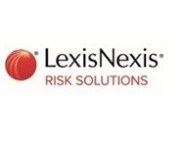The route to accurate vehicle insights

Authored by Andrew Ballard, product principle, LexisNexis Risk Solutions
The Financial Ombudsman Service saw an increase in complaints about car or motorcycle insurance from April – June 2023 with the largest increase in complaints about delays in claims and many complaints related to the settlement value of the claim. Complaints cost much more than money so the market will be examining where and how it can improve. The challenge however is that on the one hand, newer cars are becoming safer but more costly to repair and on the other hand, cars are on average now over nine years old, demanding more insight around ownership history and the level of maintenance they may have had.
Gaining a true understanding of the risk of a vehicle comes down to combining real-time data on a vehicle’s history (including how well it’s been maintained), status, build specification and value. It’s only recently that all these data sources can be accessed from one source alongside data on the driver/s to offer a complete view of the motor insurance risk at the point of quote and beyond.
Vehicle valuations are understandably a hot topic for the market. We put a number of vehicle valuation products to the test when launching our data enrichment solution, LexisNexis® Vehicle Insights and from our perspective, the basis for an accurate valuation is accurate and timely data on thousands of genuine vehicles advertised for sale with the ability to match this data to a vehicle being quoted on, insured or subject to a claim. Obviously, a true valuation will factor for the trim variant, condition, mileage, etc.
Increasingly however, an accurate valuation must also factor for the safety features of that specific vehicle. This is where risk assessment could become more complex if it were not for LexisNexis® Vehicle Build and our ongoing work to ensure that this Advanced Driver Assistance Systems (ADAS) data enrichment solution keeps pace with advances in car safety technology.
The Institute of the Motor Industry (IMI) estimates that by 2030, 44% of vehicles will have level 2 autonomy, in other words, they will have advanced driving assistance systems (ADAS) that can take over steering, acceleration, and braking in specific scenarios. Given that today, 98% of new cars have one or more (ADAS) feature, compared to just 17% in 2014, insurance providers need to get in the know about ADAS to truly understanding the risk, valuation and the claims cost of a specific vehicle. For example, in a vehicle replacement, it is highly likely the customer will want the ADAS specifications they had in their previous car, especially any they chose as optional extras.
From our analysis, Forward Automatic Emergency Braking (FWAEB) and Adaptive Cruise Control with High Speed (ACCHS) are highly predictive features in terms of reducing claims. FWAEB now features on 79% of vehicles ACCHS is on 43%. But not all ADAS is equal or developing at the same rate so insurance providers need to be able to drill down to the presence and performance of the ADAS fitted to a specific vehicle at a specific point in time. LexisNexis Vehicle Build was built with that need in mind, providing insights at the Vehicle Identification Number (VIN) level rather than just the standard data for that make, model, trim level and year.
So here comes the next challenge. The growth of the connected car brings with it the possibility of over the air updates altering the vehicle features – including vehicle safety systems, changing a known risk to an unknown risk, overnight. According to S&P Global Mobility, 350 million vehicles on the road globally will have over-the-air update capabilities in 2025. With the growth in popularity of over-the-air updates and Feature On Demand, how can insurance providers know when an over the air update has taken place? Furthermore, how can they know if that update has been activated or deactivated by the customer?
In the on-going evolution of LexisNexis Vehicle Build, we plan to provide the answer to these questions but it would be true to say that those insurance providers that have started to use ADAS data in pricing and valuations will be further down the road to the connected car. It’s not a matter of ‘if’ but ‘when’ given around a quarter of new vehicles sold in 2025 will have built-in 5G connectivity.
About LexisNexis
At LexisNexis Risk Solutions, we believe in the power of data and advanced analytics for better risk management.
With over 40 years of expertise, we are the trusted data analytics provider for organisations seeking actionable insights to manage risks and improve results while upholding the highest standards for security and privacy.
We enable insurers and brokers to improve decision-making, increase profitability and transform business performance with actionable insights from our data and analytics solutions. For more information, please contact risk.lexisnexis.co.uk/insurance or enquiries-info@lexisnexis.co.uk.

